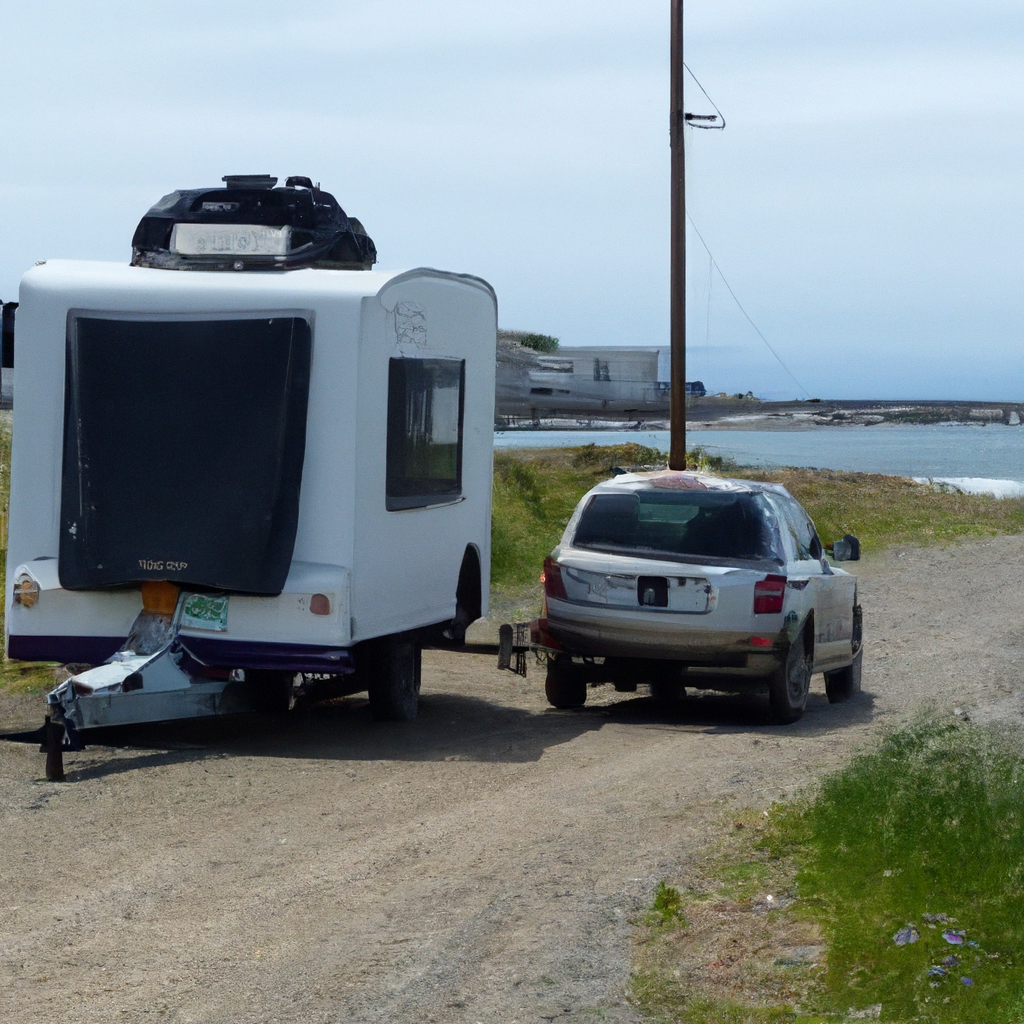Flat towing refers to the process of towing a vehicle with all four wheels on the ground, without the need for a trailer or dolly. This method has gained popularity in recent years due to its convenience and cost-effectiveness. In this article, we will explore the concept of flat towing, including the benefits, potential drawbacks, and essential considerations to ensure a safe and successful towing experience. Whether you are a seasoned road trip enthusiast or simply curious about different towing methods, understanding what flat towing means is crucial for anyone who may need to transport a vehicle.
What Does Flat Towing Mean?
Definition of Flat Towing
Flat towing, also known as dinghy towing or tow bar towing, refers to the process of towing a vehicle behind another vehicle with all four wheels on the ground. Unlike traditional towing methods where the towed vehicle is lifted entirely off the ground, flat towing allows the towed vehicle to roll freely with its wheels on the road.
Benefits of Flat Towing
There are several benefits to flat towing. Firstly, it provides a convenient way to transport a second vehicle without the need for a trailer. This can be particularly useful for RV owners who want to bring a small car or recreational vehicle along on their travels. Additionally, flat towing enables easy maneuverability, as the towed vehicle remains in direct contact with the road and can navigate turns more smoothly.

Types of Vehicles That Can Be Flat Towed
Not all vehicles are suitable for flat towing. Generally, vehicles with manual transmissions are better suited for flat towing than those with automatic transmissions. This is because, in most cases, automatic transmissions require the engine to be running to lubricate internal components, which isn’t possible when being flat towed. However, some automatic transmission vehicles can be flat towed by following specific procedures outlined in the owner’s manual.
Necessary Equipment for Flat Towing
To safely flat tow a vehicle, several pieces of equipment are required. The most essential component is a tow bar, which attaches to both the towing vehicle and the towed vehicle. It provides a secure connection and allows for safe and controlled towing. Additionally, safety cables are necessary to prevent the towed vehicle from becoming completely separated in the event of a failure in the primary attachment.
Other equipment includes a supplemental braking system, which helps the towing vehicle’s brakes by applying additional pressure to the brakes of the towed vehicle. This ensures that both vehicles can stop effectively and safely. Finally, it is important to have lighting equipment, such as taillights and brake lights, on the towed vehicle to ensure proper visibility to other drivers on the road.

Understanding the Process of Flat Towing
Flat towing involves several steps to ensure a safe and successful towing experience. Firstly, the tow bar must be properly attached to both the towing vehicle and the towed vehicle, following the manufacturer’s instructions. The safety cables should also be securely fastened, providing an additional level of security.
Before setting off, it is crucial to check that all lights on the towed vehicle are functioning correctly. This includes testing the brake lights, turn signals, and taillights. The supplemental braking system, if installed, should also be checked for proper operation.
During the towing process, it is important to maintain a safe distance between the towing vehicle and the towed vehicle. This allows for smoother turns and prevents collision in the event of sudden stops. Care should also be taken to avoid excessive speeds, as the weight and dynamics of the towed vehicle may affect the overall handling of the towing vehicle.
Precautions to Take When Flat Towing
While flat towing can be a convenient method of transporting a vehicle, it is important to exercise caution and take necessary precautions to prevent damage or accidents. One of the most crucial precautions is to ensure that the towed vehicle is properly secured to the tow bar and that all attachments are tightened according to the manufacturer’s guidelines.
Additionally, regular inspections of the towing equipment should be conducted to identify any signs of wear or damage. This includes checking the towing vehicle’s hitch, the tow bar, safety cables, and auxiliary braking system if one is installed. Any worn or damaged equipment should be promptly repaired or replaced to ensure safe and reliable towing.
Another precaution to consider is the weight limit of the towed vehicle. Exceeding the weight limit specified by the towing vehicle’s manufacturer can lead to instability and potential damage to both vehicles. It is crucial to consult the towing vehicle’s manual for the recommended weight limits and adhere to them accordingly.
Legal Considerations for Flat Towing
When engaging in flat towing, it is essential to understand the legal requirements and regulations in your jurisdiction. Different states, countries, or regions may have specific laws regarding the use of tow bars, safety cables, and lighting equipment. It is important to familiarize yourself with these regulations to avoid any legal issues or fines.
It is also worth noting that in some areas, a separate driver’s license endorsement or additional insurance may be required for the operation of a flat-towed vehicle. It is advisable to check with local authorities or consult an insurance professional to ensure compliance with all legal obligations.
Alternatives to Flat Towing
While flat towing can be a viable option for many, there are alternatives to consider depending on individual needs and circumstances. One alternative is using a trailer to transport the vehicle. A trailer provides additional protection to the towed vehicle by lifting it off the ground and eliminating the risk of wear on tires and suspension components during towing.
Another alternative is utilizing a tow dolly, which lifts and supports the towed vehicle’s front wheels off the ground while leaving the rear wheels in contact with the road. This method is particularly suitable for vehicles that cannot be flat towed, such as those with permanent four-wheel drive or vehicles with inadequate ground clearance.
Choosing the Right Vehicle for Flat Towing
When selecting a vehicle for flat towing, it is important to consider the specific towing capabilities and requirements of both the towing vehicle and the towed vehicle. The towing vehicle should have sufficient power, stability, and braking capacity to safely tow the chosen vehicle.
Furthermore, the towed vehicle should be compatible with flat towing, as mentioned earlier. Factors to consider include whether the vehicle has a manual transmission or if it allows for towing with an automatic transmission under specific conditions. Additionally, the weight of the towed vehicle should be within the appropriate limits for the towing vehicle.
Conclusion
Flat towing provides a convenient and efficient means of transporting a vehicle behind another vehicle. Understanding the necessary equipment, processes, precautions, and legal considerations is crucial for a safe and successful flat towing experience. By following the guidelines provided, you can enjoy the benefits of flat towing while ensuring the utmost safety and compliance with regulations. Remember to always consult the owner’s manual and seek professional advice when in doubt.
